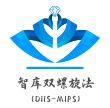Top Chinese Science Think Tank Proposes New Ways to Improve Think Tank Research
Document Type
Research-Article
Keywords
think tanks, Data-Information-Intelligence-Solution, DIIS
Abstract
The Institutes of Science and Development, Chinese Academy of Sciences has published new theory and methodology, called Data-Information-Intelligence-Solution (DIIS), on June 27 to help think tanks conduct scientific, fact-based research and create new and constructive solutions.
Full Text
The Institutes of Science and Development, Chinese Academy of Sciences (CASISD), one of China’s top science think tanks, has published new theory and methodology on June 27 to help think tanks conduct scientific, fact-based research and create new and constructive solutions.
The new model, called Data-Information-Intelligence-Solution (DIIS), is a three-dimensional, cube like “tool box” that allows researchers to easily select the appropriate methodology and direction for their work, ensuring the subsequent research are done factually and effectively, with strong focus on solving problems.
Since 2012, China has increased its support for building high-level think tanks to produce quality research that can aid decision making in public and private sectors.
Pan Jiaofeng, the president of the institutes, said a successful think tank should produce new and innovative ideas, as well as constructive, responsible suggestions backed by professional and scientific research. Think tanks should also have the foresight to spot developing trends and new issues.
However, systematic issues such as the purpose of think tanks, their research focus and methodology, as well as how to evaluate them are key challenges in think tank research and development, he added.
To tackle these issues, Pan and his team spent the last two years exploring and combining basic theories and principles of think tank construction to find a logical system that can quantifiably clarify the role of think tanks and improve their research output.
“Research quality is the foundation of think tank construction,” he said. “But the lack of research theories and methods is the most serious problem undermining research quality for think tanks both domestically and abroad.”
Pan approached this problem by breaking the monumental task of examining the entire research process of think tanks into three theoretical dimensions, namely think-tank’s research orientation, research process, and methodology, with each dimension consisting of smaller components.
These three dimensions sits on an xyz-axis and form a cube like structure. Researchers and administrators can then identify their interrelations on the cube and find the right tool or direction for the project.
For instance, if a researcher wants to probe the meaning of certain data (research process-axis) for a general analysis (methodology-axis),they can follow the axis on the cube and find analytic hierarchy process, patent mapping, and utility functions are suitable for the task.
If an administrator wants to find the principles for creating a solution (research process-axis) in an evidence-oriented project (research orientation-axis), then feasibility, reliability and rigorousness should be the top priorities.
Detailed guide and application of the DIIS model can be found in the book titled DIIS Theory and Methodology in Think Tanks co-authored by Pan Jiaofeng and his research team and published by Science Press on June 27, 2019.
http://english.casisd.cn/events/201906/t20190626_212092.html
Recommended Citation
There is no citation for this research article.

